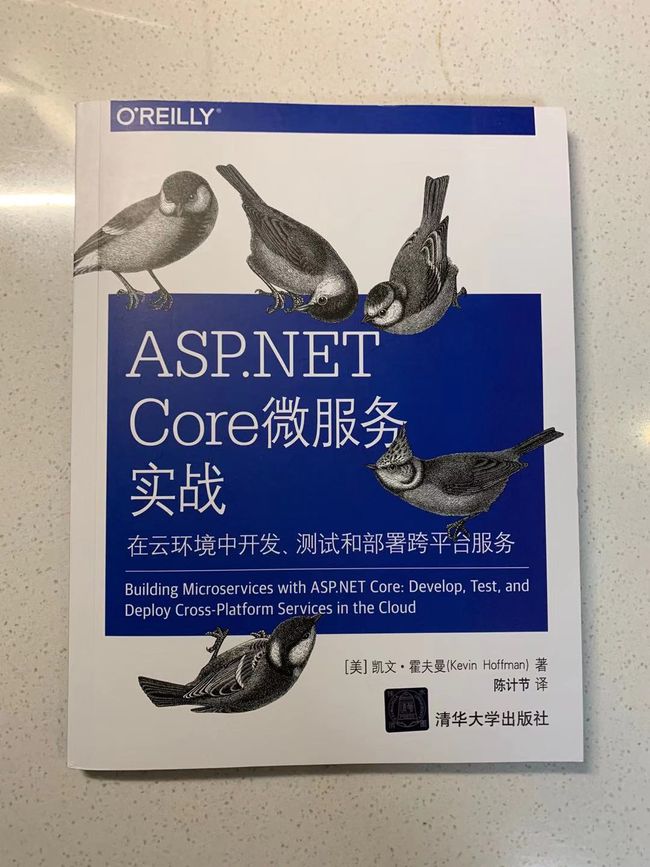第 9 章 微服务系统的配置
微服务系统中的配置需要关注更多其他方面的因素,包括:
- 配置值的安全读写
- 值变更的审计能力
- 配置信息源本身的韧性和可靠性
- 少量的环境变量难以承载大型、复杂的配置信息
- 应用要决定是否支持配置值的在线更新和实时变更,还要决定如何实现
- 对功能开关和层级化设置的支持
- 对敏感信息以及加密密钥本身进行存储和读取支持
本章首先讨论在应用中使用环境变量的机制,并演示 Docker 的支持情况
接着探索一个来自 Netflix OSS 技术栈的配置服务器产品
最后将运用 etcd,它是一个常用于配置管理的开源分布式键值数据库
在 Docker 中使用环境变量
为配置提供默认值时,还应该考虑哪些设置在应用启动期间需要通过环境变量进行覆盖
为配置设置值时,可使用键值对显示指定,如下所示:
$ sudo docker run -e SOME_VAR='foo' \ -e PASSWORD='foo' \
-e USER='bar' \
-e DB_NAME='mydb' \
-p 3000:3000 \
--name container_name microservices-aspnetcore/image:tag或者,如果不希望在命令行中显示传入值,也可以把来自启动环境的环境变量转发到容器内部,只要不传入包含值的等式即可,例如:
$ docker run -e PORT -e CLIENTSCRET -e CLIENTKEY [...]这一命令将把命令行所在终端中的 PORT、CLIENTSECRET 和 CLIENTKEY 环境变量的值传入 Docker 容器中,在这个过程中它们的值不会在命令行文本中公开,以防范潜在的安全漏洞和敏感信息泄露
如果需要向容器传入大量的环境变量,可以向 docker 命令指定一个包含键值对列表的文件:
$ docker run --env-file ./myenv.file [...]使用 Spring Cloud 配置服务器
围绕服务的配置管理的最大难题之一,并非如何将值注入到环境变量,而在于这些值本身的日常维护
当配置的原始源处的值发生变更时,我们如何得到通知
更进一步,当值发生变更时,我们如何回溯并查看之前的值
你可能发现,这似乎可用使用类似于 Git 仓库的方法来管理配置值
Spring Cloud 配置服务器(SCCS)的开发人员也持相同看法
要在 .NET Core 应用中添加 SCCS 客户端的支持,只需要在项目中添加对 Steeltoe.Extensions.Configuration.ConfigServer NuGet 包的引用
接着,我们需要配置应用,让它从正确的位置获取设置信息
我们需要定义一个 Spring 应用名称,并在 appsettings.json 文件中添加配置服务器的 URL
{
"spring": {
"application": {
"name": "foo"
},
"cloud": {
"config": {
"uri": "http://localhost:8888"
}
}
},
"Logging": {
"IncludeScopes": false,
"LogLevel": {
"Default": "Debug",
"System": "Information",
"Microsoft": "Information"
}
}
}配置完成后,Startup 构造方法仍然与其他应用几乎一致
public Startup(IHostingEnvironment env)
{
var builder = new ConfigurationBuilder()
.SetBasePath(env.ContentRootPath)
.AddJsonFile("appsettings.json", optional: true, reloadOnChange: false)
.AddEnvironmentVariables()
.AddConfigServer(env);
Configuration = builder.Build();
}要添加对配置服务器的支持,接下来需要修改 ConfigureServices 方法
首先调用 AddConfigServer 向依赖注入子系统加入配置客户端
接着指定泛型参数并调用 Configure 方法
这一操作能把从配置服务器获取的配置信息包装为一个 IOptionsSnapshot 对象,然后可由控制器和其他代码使用
public void ConfigureServices(IServiceCollection services)
{
services.AddConfigServer(Configuration);
services.AddMvc();
services.Configure(Configuration);
} 此处,用于表示从配置服务器获取的数据的数据模型,是基于 Spring Cloud 服务器示例仓库中的示例配置进行建模的
public class ConfigServerData
{
public string Bar { get; set; }
public string Foo { get; set; }
public Info Info { get; set; }
}
public class Info
{
public string Description { get; set; }
public string Url { get; set; }
}然后,在需要时,就可注入这个类的实例,以及配置服务器的客户端参数
public class MyController : MyController
{
private IOptionsSnapshot MyConfiguration { get; set; }
private ConfigServerClientSettingsOptions ConfigServerClientSettingsOptions { get; set; }
public MyController(IOptionsSnapShot opts, IOptions clientOpts)
{
...
}
...
} 上述配备完成后,如果配置服务器已处于运行状态,构造器中的 opts 变量将包含应用所有的相关配置
启动配置服务器最简单的方法就是直接通过 Docker 镜像运行以下代码
$ docker run -p 8888:8888 \
-e SPRING_CLOUD_CONFIG_SERVER_GET_URI=http://github.com/spring-cloud-samples/ \config-repohyness/spring-cloud-config-server如果服务器运行正确,应该能通过以下命令获取配置信息
curl http://localhost:8888/foo/development在本地用 Docker 镜像启动配置服务器后,使用上面展示的 C# 代码,就能体验将外部配置数据提供给 .NET Core 微服务的过程
使用 etcd 配置微服务
Spring Cloud 配置服务器的替代品不计其数,etcd 是其中很流行的一个
上一章简单提到,etcd 是一个轻量级的分布式键值数据库
它就是为你存储分布式系统所需要的最关键信息的位置
etcd 是一个集群产品,其节点之间的通信是基于 Raft 共识算法实现的
etcd 的一个最常见运用场景就是存储和检索配置信息以及功能标志
在本章的例子里,我访问 compose.io 并注册了一个免费试用的托管 etcd
创建 etcd 配置提供程序
GitHub链接:https://github.com/microservices-aspnetcore/etcd-client
创建配置源
using System;
using Microsoft.Extensions.Configuration;
namespace ConfigClient
{
public class EtcdConfigurationSource : IConfigurationSource
{
public EtcdConnectionOptions Options { get; set; }
public EtcdConfigurationSource(EtcdConnectionOptions options)
{
this.Options = options;
}
public IConfigurationProvider Build(IConfigurationBuilder builder)
{
return new EtcdConfigurationProvider(this);
}
}
}创建配置构建器
using System;
using System.Collections.Generic;
using EtcdNet;
using Microsoft.Extensions.Configuration;
using Microsoft.Extensions.Primitives;
namespace ConfigClient
{
public class EtcdConfigurationProvider : ConfigurationProvider
{
private EtcdConfigurationSource source;
public EtcdConfigurationProvider(EtcdConfigurationSource source)
{
this.source = source;
}
public override void Load()
{
EtcdClientOpitions options = new EtcdClientOpitions()
{
Urls = source.Options.Urls,
Username = source.Options.Username,
Password = source.Options.Password,
UseProxy = false,
IgnoreCertificateError = true
};
EtcdClient etcdClient = new EtcdClient(options);
try
{
EtcdResponse resp = etcdClient.GetNodeAsync(source.Options.RootKey,
recursive: true, sorted: true).Result;
if (resp.Node.Nodes != null)
{
foreach (var node in resp.Node.Nodes)
{
// child node
Data[node.Key] = node.Value;
}
}
}
catch (EtcdCommonException.KeyNotFound)
{
// key does not
Console.WriteLine("key not found exception");
}
}
}
}借助如下扩展方法
using Microsoft.Extensions.Configuration;
namespace ConfigClient
{
public static class EtcdStaticExtensions
{
public static IConfigurationBuilder AddEtcdConfiguration(this IConfigurationBuilder builder,
EtcdConnectionOptions connectionOptions)
{
return builder.Add(new EtcdConfigurationSource(connectionOptions));
}
}
public class EtcdConnectionOptions
{
public string[] Urls { get; set; }
public string Username { get; set; }
public string Password { get; set; }
public string RootKey { get; set; }
}
}便能在 Startup 类中把 etcd 添加为配置源
using System;
using System.Collections.Generic;
using System.Linq;
using System.Threading.Tasks;
using Microsoft.AspNetCore.Builder;
using Microsoft.AspNetCore.Hosting;
using Microsoft.Extensions.Configuration;
using Microsoft.Extensions.DependencyInjection;
using Microsoft.Extensions.Logging;
namespace ConfigClient
{
public class Startup
{
public Startup(IHostingEnvironment env)
{
var builder = new ConfigurationBuilder()
.SetBasePath(env.ContentRootPath)
.AddJsonFile("appsettings.json", optional: false, reloadOnChange: true)
.AddJsonFile($"appsettings.{env.EnvironmentName}.json", optional: true)
.AddEtcdConfiguration(new EtcdConnectionOptions
{
Urls = new string[] {
"https://portal1934-21.euphoric-etcd-31.capital-one-3.composedb.com:17174",
"https://portal2016-22.euphoric-etcd-31.capital-one-3.composedb.com:17174"
},
Username = "root",
Password = "changeme",
RootKey = "/myapp"
})
.AddEnvironmentVariables();
Configuration = builder.Build();
}
public static IConfigurationRoot Configuration { get; set; }
// This method gets called by the runtime. Use this method to add services to the container.
public void ConfigureServices(IServiceCollection services)
{
// Add framework services.
services.AddMvc();
}
// This method gets called by the runtime. Use this method to configure the HTTP request pipeline.
public void Configure(IApplicationBuilder app, IHostingEnvironment env, ILoggerFactory loggerFactory)
{
loggerFactory.AddConsole();
loggerFactory.AddDebug();
app.UseMvc();
}
}
}使用来自 etcd 的配置值
using System;
using System.Collections.Generic;
using System.Linq;
using System.Threading.Tasks;
using Microsoft.AspNetCore.Mvc;
using EtcdNet;
using Microsoft.Extensions.Logging;
using Microsoft.Extensions.Configuration;
namespace ConfigClient.Controllers
{
[Route("api/[controller]")]
public class ValuesController : Controller
{
private ILogger logger;
public ValuesController(ILogger logger)
{
this.logger = logger;
}
// GET api/values
[HttpGet]
public IEnumerable Get()
{
List values = new List();
values.Add(Startup.Configuration.GetSection("/myapp/hello").Value);
values.Add(Startup.Configuration.GetSection("/myapp/rate").Value);
return values;
}
// GET api/values/5
[HttpGet("{id}")]
public string Get(int id)
{
return "value";
}
// POST api/values
[HttpPost]
public void Post([FromBody]string value)
{
}
// PUT api/values/5
[HttpPut("{id}")]
public void Put(int id, [FromBody]string value)
{
}
// DELETE api/values/5
[HttpDelete("{id}")]
public void Delete(int id)
{
}
}
} 现在访问 http://localhost:3000/api/values 端点,将返回这些值:
{"world", "12.5"}这些正是本节前面面向 etcd 服务器添加的值
只使用了少数几行代码,我们便创建了一个由远程配置服务器支持的、稳定而符合标准的 ASP.NET 配置源
![]()
本作品采用知识共享署名-非商业性使用-相同方式共享 4.0 国际许可协议进行许可。
欢迎转载、使用、重新发布,但务必保留文章署名 郑子铭 (包含链接: http://www.cnblogs.com/MingsonZheng/ ),不得用于商业目的,基于本文修改后的作品务必以相同的许可发布。
如有任何疑问,请与我联系 ([email protected]) 。

